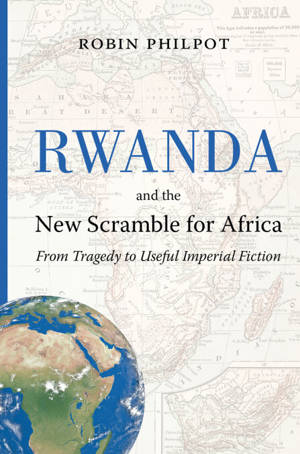
Je cadeautjes zeker op tijd in huis hebben voor de feestdagen? Kom langs in onze winkels en vind het perfecte geschenk!
- Afhalen na 1 uur in een winkel met voorraad
- Gratis thuislevering in België vanaf € 30
- Ruim aanbod met 7 miljoen producten
Je cadeautjes zeker op tijd in huis hebben voor de feestdagen? Kom langs in onze winkels en vind het perfecte geschenk!
- Afhalen na 1 uur in een winkel met voorraad
- Gratis thuislevering in België vanaf € 30
- Ruim aanbod met 7 miljoen producten
Zoeken
Rwanda and the New Scramble for Africa E-BOOK
From Tragedy to Useful Imperial Fiction
Robin Philpot
E-book | Engels
€ 15,99
+ 15 punten
Omschrijving
The book comprises three parts. The first part addresses the little-discussed but crucial events preceding the assassination of the presidents of Rwanda and Burundi
Former UN Secretary General Boutros Boutros-Ghali declared, "The Rwandan genocide was 100% American Responsibility."
Former UN Secretary General Boutros Boutros-Ghali declared, "The Rwandan genocide was 100% American Responsibility."
on April 6, 1994, which triggered massive killings. These include the invasion in 1990, drawn-out guerrilla and terrorist warfare, imposition of a new political and economic order followed by an ill named “peace process” that sanctified the occupation of the country by the invading army, and the assassination of two African heads of state.
The second part, “The Heart of Dark Imaginations,” shows how popular literature on Rwanda has been built on the old clichés, metaphors, and conventions generated during 400 years of slavery, the slave trade, and colonialism, and helped justify them. The resulting narrative is perfectly crafted for the “new scramble for Africa.”
The third part takes down the so-called international criminal justice as applied to Rwanda and explains how and why the murderous, never-ending war in Congo began.
Former UN Secretary General Boutros Boutros-Ghali declared, "The Rwandan genocide was 100% American Responsibility."
Former UN Secretary General Boutros Boutros-Ghali declared, "The Rwandan genocide was 100% American Responsibility."
on April 6, 1994, which triggered massive killings. These include the invasion in 1990, drawn-out guerrilla and terrorist warfare, imposition of a new political and economic order followed by an ill named “peace process” that sanctified the occupation of the country by the invading army, and the assassination of two African heads of state.
The second part, “The Heart of Dark Imaginations,” shows how popular literature on Rwanda has been built on the old clichés, metaphors, and conventions generated during 400 years of slavery, the slave trade, and colonialism, and helped justify them. The resulting narrative is perfectly crafted for the “new scramble for Africa.”
The third part takes down the so-called international criminal justice as applied to Rwanda and explains how and why the murderous, never-ending war in Congo began.
Specificaties
Betrokkenen
- Auteur(s):
- Uitgeverij:
Inhoud
- Aantal bladzijden:
- 276
- Taal:
- Engels
Eigenschappen
- Productcode (EAN):
- 9781771860055
- Verschijningsdatum:
- 27/11/2013
- Uitvoering:
- E-book
- Beveiligd met:
- Digital watermarking
- Formaat:
- ePub

Alleen bij Standaard Boekhandel
+ 15 punten op je klantenkaart van Standaard Boekhandel
Beoordelingen
We publiceren alleen reviews die voldoen aan de voorwaarden voor reviews. Bekijk onze voorwaarden voor reviews.









